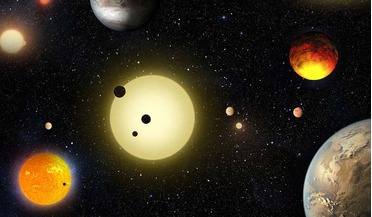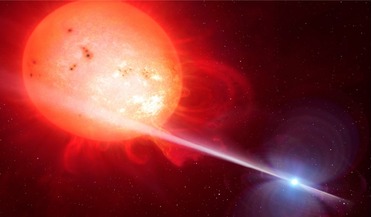ROOM: The Space Journal is one of the leading magazines on space exploration, technology and industry. At ROOM, we share a common dream – advancement of peaceful space exploration for the benefit of humankind, all while bringing you comprehensive articles on a plethora of popular topics. Our authors include experts and industry leaders from all over the world, which lets us bring you the newest and comprehensive information about kepler and exoplanets.
 January 2020
A year of consolidation and expansion
January 2020
A year of consolidation and expansion
..., Estonia. Asgardia’s Chair of Parliament, Lembit Öpik, reviews the well-attended sitting and ‘declares an interest’ in the location and the name of the conference venue. Being an Asgardian Member of Parliament (AMP) mostly... to decide. I happened to know of a great, modern convention centre, which had up-to-the-minute communications facilities and a good price. It also happens to have a most agreeable name: the Öpik Conference Centre. I must ...
 April 2019
Scanning the skies for exoplanets
April 2019
Scanning the skies for exoplanets
...space agency has ever sent into space, Kepler. During its lifetime, Kepler observed an astonishing 530,506 stars and found over 2660 exoplanets. Its discoveries revolutionised the field of exoplanet studies as it revealed a plethora of ...the surface in the search for Earth-like exoplanets and a true homeaway- from-home still remains at large Unlike Kepler, however, TESS is most sensitive to finding exoplanets that orbit their host stars in 13 days ...
 11 May 2016
Kepler scientists announce a major increase in confirmed exoplanet numbers
11 May 2016
Kepler scientists announce a major increase in confirmed exoplanet numbers
... the transiting planet. So far, using this method, Kepler scientists have identified about 4700 exoplanet ‘candidates’ and have validated about 1000 of them as actual exoplanets. Candidate planets at the time of labelling, are just... of the transit-like signals that the telescope recorded.” The outlook for exoplanet surveys improved dramatically with the launch of Kepler and within its first few months of data gathering, hundreds of transit signals...
 August 2018
Exoplanet census promises radical discoveries
August 2018
Exoplanet census promises radical discoveries
... police radar guns to detect speeding cars. Figure 1: The sensitivity regions of the Kepler transit survey (in red) and the WFIRST exoplanet microlensing survey (in blue) are compared to the orbits of the planets in our... planet or star in systems with more than one host star. The combination of the WFIRST exoplanet microlensing survey and Kepler’s transit survey will provide a complete statistical census of planets at all separations. This is the...
 September 2017
Binary stars and their extraordinary lives
September 2017
Binary stars and their extraordinary lives
...indispensable tool for measuring the masses of stars, as discovered by Kepler and Newton in the 17th century. Their orbital properties, such as period and eccentricity (the shape of its orbit), derive directly from fundamental physical...vital to astrophysics today as they were in the 17th century to Kepler and Newton. They can be used to measure the expansion rate of the Universe and can help us to understand the formation of the chemical elements ...
 11 December 2019
Water abundance lower than expected on exoplanets
11 December 2019
Water abundance lower than expected on exoplanets
...however, one of the most extensive surveys of atmospheric chemical compositions of exoplanets to date has revealed trends that challenge that and other similar theories and instead suggests that while water is out there, it is not nearly ...the Solar System (in astronomy, any element except for hydrogen and helium are classed as metals) and when compared with metallicity predictions for exoplanets, say the authors of their recent paper. "We are ...
 November 2018
How many people does it take to colonise an exoplanet?
November 2018
How many people does it take to colonise an exoplanet?
...ROOM, #2 (16), Andrew Hein’s article ‘Flying to the stars’, considered the possibilities and challenges of getting beyond our solar system to an exoplanet. Here, the authors take a step further, calculating how many people would be ... frozen embryos could be a realistic option to slowly populate an Earth-like exoplanet - robotic equipment would help them to mature and develop once they reach their destination This result, that the required crew...
 October 2024
Cinema and extraterrestrial archaeology
October 2024
Cinema and extraterrestrial archaeology
... European Space Agency for all space missions The first exoplanet (51 Pegasi b) was discovered and confirmed in 1995, but some Greek philosophers and scholars of antiquity had already sensed its existence. Democritus ... the discovery of xenoarchaeological remains on an exoplanet, but without any connection with Earth’s antiquity and its myths. In the 23rd century, a scientific expedition discovers on the exoplanet Altair IV the remains of a very ...
 June 2017
Space economics - industry trends and space investing
June 2017
Space economics - industry trends and space investing
...a huge explosion in company formations. Notable startups include Planet, OmniEarth, Audacy, LeoLabs, Spire, Kepler, OneWeb, Astranis and Analytical Space. These companies are all racing to build infrastructure for what has been referred...the future the commercial sector will take an even larger role in shaping both the priorities and the laws and policies governing space The economics of the space industry is evolving rapidly. New sources of ...